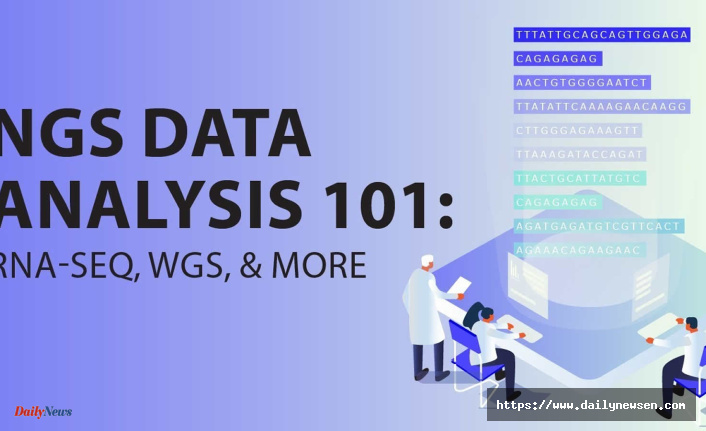Analyzing Next-Generation Sequencing (NGS) data is a complex task that goes beyond the capabilities of a powerful computer. To understand and interpret DNA and RNA data, it's critical that you know the NGS tools needed. In addition, it's vital to understand how to prepare your NGS data to get the correct result. This article aims to provide straightforward information on the essential steps and tools required for practical NGS data analysis, whether it involves genomic, gene expression, or methylation analyses.
Four Fundamental Steps for NGS Data Analysis
1: Cleaning of NGS Data
Cleaning data is about extracting meaningful biological information from raw sequencer output. This involves the removal of small sequences and adapters, followed by a quality check using the Phred score. FastQC is a tool that provides graphs and thresholds to guide data selection. It's critical to note this process involves getting the lead of junk data, which you understand the patterns quickly, and conducting NGS data analysis in the shortest time possible. After cleaning, you will be sure you are dealing with quality data.
2: Exploration of NGS Data
With millions of sequences, data exploration becomes crucial. Luckily, there are tools and software that can help you reduce any data dimensionality. These components are crucial in understanding the patterns and graphs of any data. Principal Component Analysis (PCA) is a common technique to reduce data dimensionality, allowing researchers to understand sample behavior, identify outliers, and observe sample clustering under different treatments.
3: Visualization of NGS Data
Visualizing NGS data is essential for interpretation. Different tools are employed based on the NGS application. Circular layouts, heatmaps, and histograms are standard visualization methods, offering insights into whole genome sequencing, gene expression, and methylation studies. For example, during genome sequencing, most people will use tools like circular layouts to present the genes and display the overall data. If you are considering gene expression analysis, use the heatmaps to describe the difference between treatments.
4: Deeper Analyses of NGS Data
Depending on the NGS goals, deeper analyses can be pursued. For example, Whole Genome Sequencing (WGS) data can be used for variant analyses or microsatellite marker detection. Regularly updating analyses is crucial as NGS tools evolve, and metanalyses can provide novel interpretations by reusing existing data with new methodologies.
Tools for Different NGS Applications
a. Tools for RNA Sequencing Data Analysis
RNA-Seq analysis tools aid in understanding gene expression patterns and identifying differentially expressed genes.
b. Tools for Whole Genome Sequencing Data Analysis
WGS data analysis tools facilitate variant analyses, microsatellite marker detection, and sequencing of plasmids in cloning protocols.
c. Tools for Methylation Data Analysis
Tools for methylation data analysis help interpret epigenomic profiles, presenting differences in methylation rates through heatmaps and histograms.
d. Tools for Exome Data Analysis
Exome data analysis tools focus on analyzing specific protein-coding regions of the genome, providing insights into genetic variations associated with diseases.
Take Home!
NGS data analysis involves a systematic approach encompassing cleaning, exploration, visualization, and deeper analyses. Utilizing appropriate tools for specific NGS applications is crucial for extracting meaningful information and staying updated with evolving methodologies. Researchers are encouraged to develop clear goals and thoroughly understand their NGS application to navigate the extensive list of available tools effectively.












